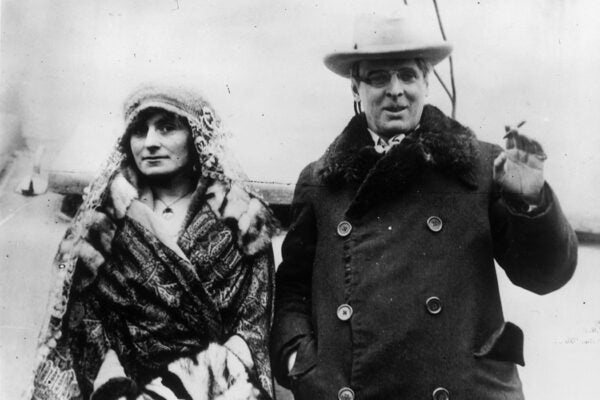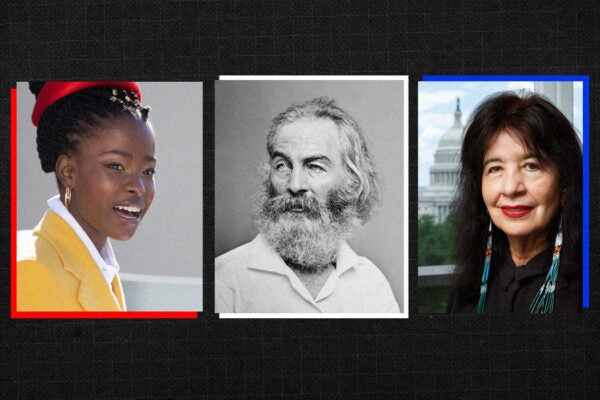Maybe you’re a Swiftie, and you discovered burlesque thanks to Dita von Teese’s swim in a martini glass in the Bejeweled video. Maybe you’ve been a fan of curvy ladies and marabou robes since the 1990s “neo-burlesque” revival—or perhaps, even earlier than that. People have been discovering (and re-discovering) burlesque throughout the history of American entertainment, from the 1840s to the present day, and though there are always moments when anti-vice crusaders and naysayers swear it’s on the way out, it always seems to survive. Even more, the burlesque entertainments of any given period have a lot to say about sex, gender, queerness, performance, desire, and sex work.
For starters: what is burlesque? Derived from Romance languages, the term originally referred to a theatrical production that used exaggeration and mockery to ridicule a serious subject. Over time, it came to encompass a broad swath of variety entertainment, typically including erotic or striptease content along with the other “broadly humorous, often earthy” acts.
A few persistent qualities now define it. It showcases the female body, but it’s not generally explicit. It isn’t pornography, writes art historian Maria-Elena Buszek, and in many cases, it eliminates men or the male gaze from the picture entirely. Dance scholar Sherril Dodds views it as a transformative art that considers how the female body is both staged and viewed, re-choreographing public ideas about and representations of women. Popular beauty standards in any era may glorify a “slim, taut, and youthful” figure, but burlesque and its audiences celebrate “the inclusion and celebration of female bodies that exist outside the narrowly conceived ideal of contemporary femininity.”
Burlesque is self-aware, too, and very often it’s sharply funny. Striptease, done playfully, “acts as a means to parody, satirize, or ridicule traditions of female representation.” Like drag performance, burlesque uses norms of beauty and sexuality as playgrounds—ways to enjoy, appropriate, and comment on modes of gender and presentation all at once.
Burlesque is largely understood to have nineteenth-century origins. In the 1840s, theater was in a transitional stage: for the most part, either people were quite wealthy and attended white-glove performances of refined arts, or the theater was understood to offer raucous fare and certainly wasn’t safe for women or children. “Leg shows,” in which women danced about in tights, were undeniably popular, but they were viewed as entertainment for those with limited horizons.
In search of a paying audience, folks such as P. T. Barnum and the actor-playwright Laura Keene worked to make theater family friendly. Barnum did this by staging temperance drama, and Keene by bringing the leg show to the middle class. Providing a safe theater (and no bar), Keene staged her play The Seven Sisters like a Romantic ballet, writes Buszek. The 1860 production incorporated the “short-petticoated corps de ballet into [a] narrative about a daughter of the god Pluto who visits contemporary New York City and falls in love with a young playwright.” Critics went wild for the show’s “hundred miscellaneous legs in flesh-colored tights.”
Eight years later, Lydia Thompson, with her “British Blondes” troupe, arrived in the city to poke fun at “classical literature and contemporary culture alike (and sometimes simultaneously), as well as the very notion of the melodramatic and sentimental contemporary female that the ideal 19th-century ‘true woman’ supposedly represented.”
The mid-nineteenth-century stage thus became a space and time for exploring and criticizing social ideas of femininity. Both Buszek and theater historian Theresa Saxon describe a period of often daring, sometimes chaotic work by women onstage. In the 1840s, Charlotte Cushman famously appeared in drag, playing roles including the male lead in Romeo and Juliet. The actress Adah Isaacs Menken was equally willing to self-promote with topless cartes de visite and images of her in stage costume or in male drag.
And this was within more traditional theater. At the “leg shows,” Buszek writes,
women were not only the visual draw, but frequently the sole actors, comedians, and writers of the material. The leg show soon evolved into the theatrical staging of a Victorian world upside-down, raising what historian Robert C. Allen calls “troubling questions about how a woman should be ‘allowed’ to act on stage, about how femininity should and could be represented, and about the relationship of women onstage to women in the outside, ‘real’ world.”
The turn-of-the-century craze for “cooch,” or belly dancing, only fed the demand for spicy burlesque. By the 1920s and 1930s, the striptease aspect of the performance was at the forefront with its own specific sort of theatricality.
According to women’s studies scholar Andrea Friedman, at this point the popular striptease act worked
by encouraging those watching to imagine what they had not seen. The key to the striptease was not how much a woman stripped, but how much the people in the audience thought she stripped, as well as how successfully she encouraged their desire that she strip.
To these audiences, double entendre and the tantalizing unseen were more important to the performance than nudity. Some people considered this elegant stagecraft; quoting the aforementioned Robert C. Allen, author of Horrible Prettiness: Burlesque and American Culture, Friedman argues that the “expressive sexuality and inversive insubordination” of early American burlesque had been twisted into something else in the early twentieth century: “the female burlesque performer became merely an object of male ‘scopic desire.’”
Burlesque flourished through World War I, but things changed with the Depression. As Broadway productions closed in New York, burlesque operators rushed uptown to capture a larger, more-monied audience. Property owners balked at the newcomers showing so much skin, writes Friedman, and since they couldn’t shut down burlesque venues on financial or censorship grounds, they went with the idea that burlesque “attracted a class of disorderly persons,” in the words of then Commissioner of Licenses James F. Geraghty. One by one, license renewals were denied.
Was this the end? Nope. Live theater may have fizzled for burlesque, but an audience continued for film.
“The burlesque film thrived on the fringes of American cinema in the years following the end of World War II,” writes Eric Schaefer, “conveying the unvarnished sexual spectacle forbidden in movies governed by the Production Code.”
Films such 1953’s “Peek-a-Boo” were easy to make—and versatile. Since they strung together vignettes rather than laying out a full plot, filmmakers could cut and re-cut segments together. There might also be “hot” and “cold” cuts for more or less conservative towns (or one for the censors). And despite the formal push out of the theater, thousands of dancers performed across the country in traveling carnivals and circuses, clubs, and smaller venues.
As Schaefer asks,
What was the nature of the performance of striptease in postwar burlesque films? By removing articles of clothing in a highly ritualized and stylized fashion, the stripper not only became a potential object of erotic desire but in making a spectacle of herself she simultaneously made a spectacle of gender identity. As performers, strippers were not merely the bearers of meaning in films but active makers of meaning, calling attention to the performative aspect of gender.
This was true for queer performers, too. Since “you were judged only on the job you did,” writes sociologist Becky L. Ross, quoting circus expert A. W. Stencell, burlesque accommodated a significant lesbian and bi population, gay men, and trans folks like Hedy Jo Star, who performed in and managed a 1950s carnival girl show. Performing in gay and straight venues, “queer stripteasers, staff, and fans interrupted the heterosexual imperative,” Ross writes.
Weekly Newsletter
The most popular exotic dancers made bank. According to Ross,
Sally Rand, Gypsy Rose Lee, Lili St. Cyr, “Queen of the Strippers,” and Tempest Storm, all of whom performed in Vancouver during the 1950s and 1960s, netted top salaries. Their price of upwards of $4,000 per weekend (even when they were over 40), meant they earned more than women in any other job category.
Popular opinion, as Ross and Dodds note, holds that burlesque waned in the 1960s and 1970s thanks to a combination of cinema, second-wave feminism, popularized pornography, and the sexual revolution. Lamenting the loss of the “tasteful, lavish art of ‘the tease,’” many considered burlesque an inevitable casualty of “vulgar, anti-erotic” culture, Ross writes. But burlesque would return.
Beginning with a “neo-burlesque” movement in the 1990s, the art form has embraced and repurposed many of its historical tropes for eager, often queer, and overwhelmingly female audiences. Burlesque resonates for audiences today in its celebration of variable bodies, its conscious ability to play with gender and mock power structures, and its ability to nurture both fun and transformation. This is no surprise to anyone familiar with its history. Writes Schaefer, even in 1937, a Variety columnist understood that “burlesque is elastic; more so, perhaps, than any other form in theatrical entertainment.”







